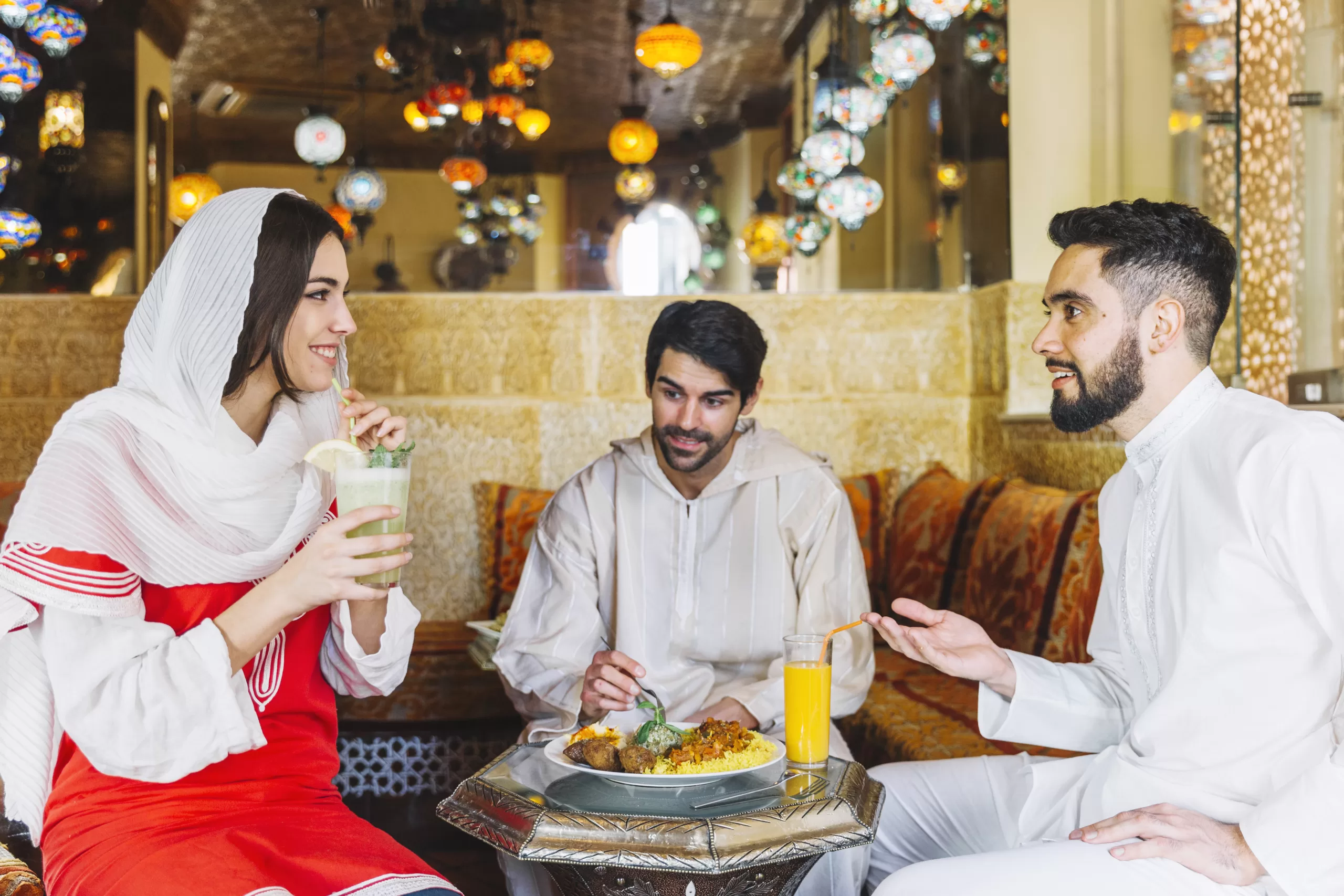Sweets to Cherish Your Taste Buds
Arabic sweets are a delightful and indulgent way to satisfy your sweet tooth while experiencing the rich culture and heritage of the Middle East. These desserts are characterized by their unique flavors, textures, and presentation, developed over centuries of culinary traditions.
These are a rich and flavorful part of Middle Eastern cuisine. They are often made with a combination of nuts, spices, and sweeteners, resulting in a unique flavor profile that is difficult to find in other desserts. In this article, we’ll explore some of the most popular Arabic sweets, their ingredients, and their cultural significance.
Top 5 Arabic Sweets to Try Today
- Baklava: Layers of Sweetness
One of the most well-known Arabic sweets is baklava. This delicious pastry has layers of phyllo dough, chopped nuts (usually pistachios, walnuts, or almonds), and honey or syrup. It’s a dessert enjoyed all over the Middle East and has become popular in other parts of the world.
- Knafeh: A Popular Pastry
Another popular Arabic sweet is knafeh, a pastry made with shredded phyllo dough, cheese, and syrup. This dessert is especially popular in Lebanon and Palestine, often served during special occasions like weddings and holidays.
- Ma’amoul: The Delicious Filled Cookies
Ma’amoul Arabic is sweet and popular throughout the Middle East. These small, delicate cookies are often filled with dates, nuts, or other sweet ingredients. They are usually served during religious holidays like Eid al-Fitr and Eid al-Adha.
- Halva: A Sweet Tahini Treat
Halva is made from tahini (sesame paste) and sugar. It’s a dense, sweet treat often served with coffee or tea. Halva can be found in various varieties, including pistachio, chocolate, and vanilla.
- Turkish Delight: A Chewy Candy
Another sweet that’s often associated with Middle Eastern cuisine is Turkish delight. This candy has starch, sugar, and flavorings like rosewater, lemon, and mint. It has a unique texture that is chewy and slightly firm, and it’s often dusted with powdered sugar or cornstarch to keep it from sticking.
The Cultural Significance of Arabic Sweets
Sweets are more than just delicious desserts; they also hold significant cultural importance. Many of these sweets are associated with religious holidays and special occasions. For example, during Ramadan, Muslims fast from sunrise to sunset and then break their fast with a meal that often includes dates and other sweets.
- Hospitality and Generosity
In many Middle Eastern cultures, offering guests sweets shows hospitality and generosity. It is common for families to prepare and share sweets with neighbors, friends, and relatives during holidays and gatherings.
- Culinary Heritage
Moreover, Arabic sweets are an important part of the Middle East’s culinary heritage, reflecting the region’s diverse history and traditions. The recipes and techniques used to make these desserts have been passed down from generation to generation and are often closely guarded family secrets.
- Sweets for Particular Countries or Places
Some sweets, such as ma’amoul, are associated with certain regions or countries. For example, ma’amoul is a filled cookie popular in Lebanon, Syria, and other Levantine countries. Each country and family may have unique variations of the recipe, which may be shaped and decorated differently.
- Important for Local Economy
In addition to their cultural significance, Arabic sweets also play a role in the local economy. Many small businesses specialize in producing and selling these desserts, and the demand for them is high year-round.
Health Benefits
Sweets can offer various health benefits due to their ingredients. For instance, many of these desserts contain nuts high in protein, healthy fats, fiber, vitamins, and minerals. These nutrients can help to reduce inflammation, lower cholesterol levels, and promote heart health.
- Honey with Antioxidant and Antibacterial Properties
Moreover, some sweets are made with natural sweeteners like honey, which has antioxidant and antibacterial properties, and honey can help to boost the immune system and fight infections. Additionally, some may contain spices like cinnamon and cardamom, which have anti-inflammatory and blood sugar-regulating effects.
- Dates as Natural Sweetener
Dates, often used as a natural sweetener in sweets, are rich in fiber, vitamins, and minerals. They are also a good source of antioxidants and may help to improve digestion and boost energy levels.
- Nutritional Benefits
While sweets are not typically considered health foods, they can offer nutritional benefits when consumed in moderation and as part of a balanced diet. Studies have shown that eating nuts can lower the risk of heart disease and other chronic illnesses.
Common Ingredients in Sweets
When it comes to making Arabic sweets, a few key ingredients are commonly used:
- Nuts, like pistachios, almonds, and walnuts, are often chopped and used in various desserts.
- Honey and syrup are also commonly used to sweeten these treats.
- Ingredients like rosewater, cardamom, and saffron add a unique flavor profile to the desserts.
Conclusion: Exploring the World of Sweets
Arabic sweets are a delicious and culturally significant part of Middle Eastern cuisine. From baklava to knafeh to ma’amoul, these sweets come in many different forms and flavors. They are often associated with special occasions and religious holidays and are also known for their health benefits. Whether you want to try a new dessert or learn more about Middle Eastern culture, “Arabic sweet” is worth exploring thing.




